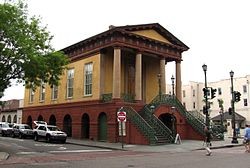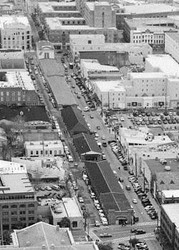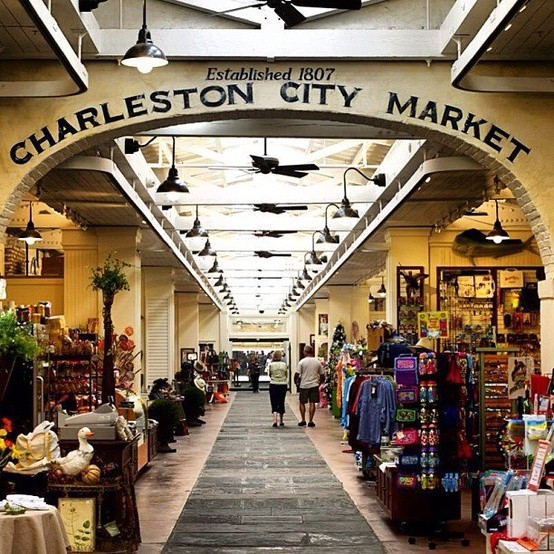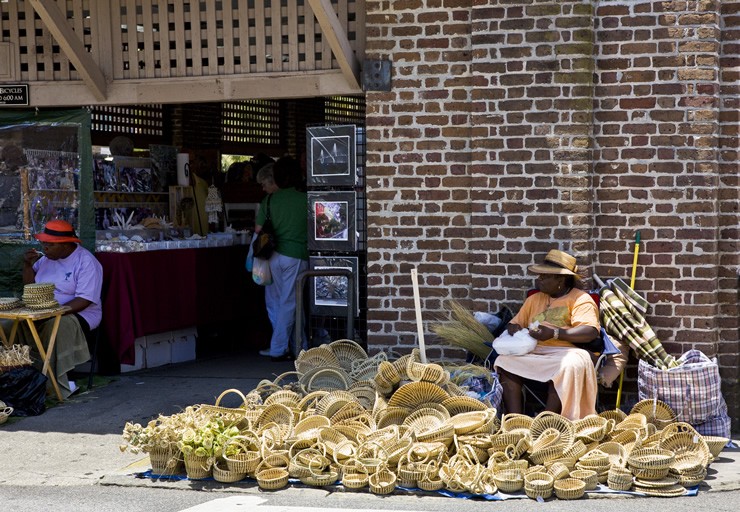The Charleston City Market
Introduction
Text-to-speech Audio
Images
City Market entrance

Aerial view

Inside view of the market.

Sweetgrass basket maker

Backstory and Context
Text-to-speech Audio
In 1788 Charles Cotesworth Pinckney, former Revolutionary War General, donated a strip of land to establish a public market that connected the Charleston Harbor all the way to Meeting Street. The market would expand further after receiving this land into the large space it is in today.
Originally the City Market vendors rented their stalls for $1.00 or $2.00 a day, if the stall had a marble slab to keep the meat or fish cold. These first vendors mainly sold beef, fish, or vegetables. The meat vendors were notorious for throwing beef scrap out onto the city street. Buzzards were attracted to the scraps of meat and were useful in keeping the streets clean. The buzzards were protected by law and actually nicknamed the Charleston Eagles. The market also acted a social hub for lower and middle class city residents to gather, socialize, and even play games.
The main building which is now the focal point of the market was designed by Edwards Bicknell White in 1841 and it is modeled after the Temple of the Wingless Victory in Athens, Greece. This building is at the head of a string of several open-air brick buildings that stretch for 4 city blocks. The main part of the head building was used during the Civil War for military recruitment and since then has been used for meetings and social functions.
Since the 1970s the main occupants of the City Market consist of unique shops that sell clothing, perfumes, candy, Charleston souvenirs, and hand crafted sea grass baskets. In all areas of the market men and women from Gullah descent can be found hand-weaving sweet-grass baskets using the traditional West-African method making this a very unique place to visit. The market has withstood tornadoes, fires, earthquakes, and hurricanes. It has since been added to the National Register of Historic places. This market is very symbolic of the history of commerce in Charleston and a great representation of its culture.
